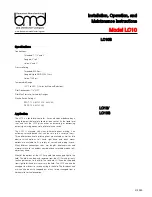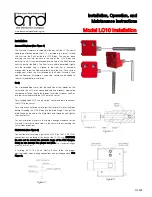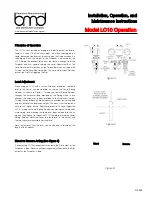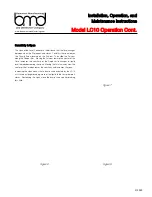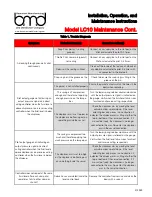
1/2019
Installation, Operation, and
Maintenance Instructions
www.beaumontmanufacturing.com
Model LC10
Specifications
Connections:
Threaded: 1 1/2” and 2”
Flanged: 2” to 8”
Union: 4” and 5”
Pressure Rating:
Threaded: 6000 psi
Flanged: Up to ANSI 2500 Class
Union: 1500 psi
Temperature Range:
-
50° F to 400° F (Varies by Material Selections)
Pilot Connections: 1/4” NPT
Pilot Max Pressure: Limited by Gauges
Electric Switch Ratings:
SPDT: 15 A @ 125, 250, 480 VAC
DPDT: 10 A @ 125 VAC
Application
The LC10 is a liquid level controller. It uses a displacer balanced by a
spring to detect the level of a liquid inside a vessel. As the liquid level
rises and falls the LC10 gives either an increasing or decreasing
output signal using a pneumatic pilot or electric switch.
The LC10 is available with many different options making it an
extremely versatile device that can be set up in a variety of ways.
Three different pneumatic pilots options are available as well as two
electric switch options. Left hand, right hand, and back mount
options are available to fit a variety of vessels and piping layouts.
Many different connections sizes, arm lengths, displacer sizes and
materials make for an endless combination of available models to fit
almost any need.
Many of the options of the LC10 are able to be changed right in the
field. The pilots can be easily removed from the LC10 making it easy
to change them out in the field. The standard LC10 can be swapped
from right to left hand or vice versa in the field. The LC10 can also be
changed from direct to reverse acting in the field. The displacer and
arm can also be easily swapped out at any time or changed from a
horizontal to vertical orientation.
LC10B
LC10/
LC10S

